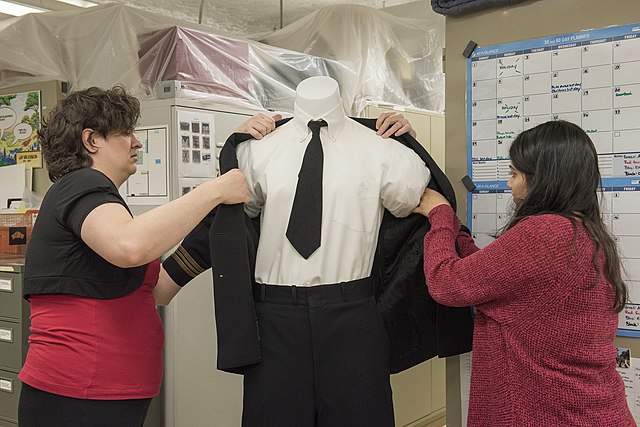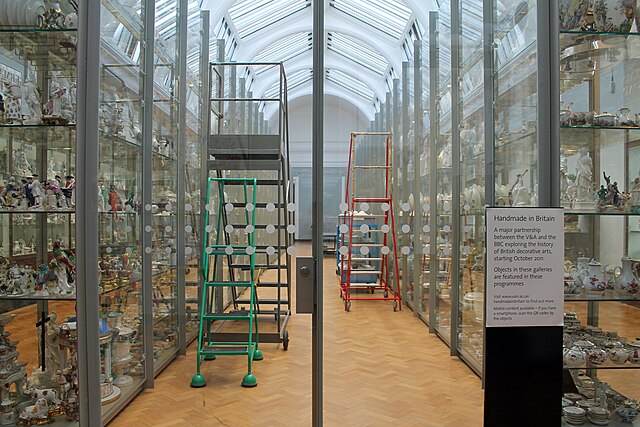A curator is a manager or overseer. When working with cultural organizations, a curator is typically a "collections curator" or an "exhibitions curator", and has multifaceted tasks dependent on the particular institution and its mission. The term "curator" may designate the head of any given division, not limited to museums. Curator roles include "community curators", "literary curators", "digital curators", and "biocurators".
Curator and exhibit designer dress a mannequin for an exhibit.
Emile Theodore (center), museum curator of the Palais des Beaux-Arts de Lille from 1912 to 1937, shown here during reconstruction of the gallery dedicated to Spanish and Italian paintings, c. 1920.
A museum is distinguished by a collection of often unique objects that forms the core of its activities for exhibitions, education, research, etc. This differentiates it from an archive or library, where the contents may be more paper-based, replaceable and less exhibition oriented, or a private collection of art formed by an individual, family or institution that may grant no public access. A museum normally has a collecting policy for new acquisitions, so only objects in certain categories and of a certain quality are accepted into the collection. The process by which an object is formally included in the collection is called accessioning and each object is given a unique accession number.
Antique cuckoo clocks in the interior of Cuckooland Museum, a specialized museum in Tabley, England
A catalogue of the items in a collection using index cards
A collection of masks and textiles from different parts of the world displayed in the living room of the Robert Brady Museum, Cuernavaca, Mexico
Visual storage at the Victoria & Albert Museum, London, England






